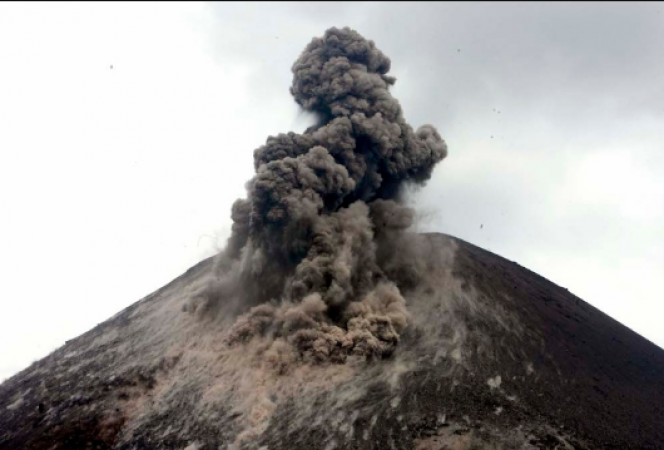
Jakarta: On Friday, the Anak Krakatoa volcano in Indonesia erupted, spewing a column of ash more than three kilometres into the air, according to officials.
The crater left behind by Mount Krakatoa's 1883 eruption, one of the deadliest and most destructive in history, is where the volcanic island first rose out of the water at the turn of the last century.
The ash cloud from Anak Krakatoa, also known as the "Child of Krakatoa," covered the strait separating the islands of Java and Sumatra. After the eruption at 08:46 (0146 GMT) there were no immediate reports of injuries or damage.
A representative from the Krakatoa monitoring station, Deny Mardiono, stated in a press release that the height of the eruption column was observed to be 3,000 metres (nearly 10,000 feet) above the summit.
Also Read: Chinese naval vessel on 'friendly' tour to the Philippines
According to the report, "the ash column was observed to be grey to black with thick intensity to the southwest." He issued a warning to the populace telling them not to conduct any activities within three miles or five kilometres of the volcano's crater.
Following a sharp increase in volcanic activity in 2022, authorities raised Anak Krakatoa's status to the second-highest warning level.
Also Read: "The UN Security Council must give Arab and global crises more attention than just Ukraine"
When a significant eruption in 2018 caused large chunks to fall into the ocean and cause a tsunami that killed more than 400 people and injured countless others, its crater partially collapsed.
Southeast Asian island nation Indonesia is located on the Pacific Ring of Fire, where the collision of continental plates results in intense volcanic and seismic activity. There are nearly 130 active volcanoes in the nation.